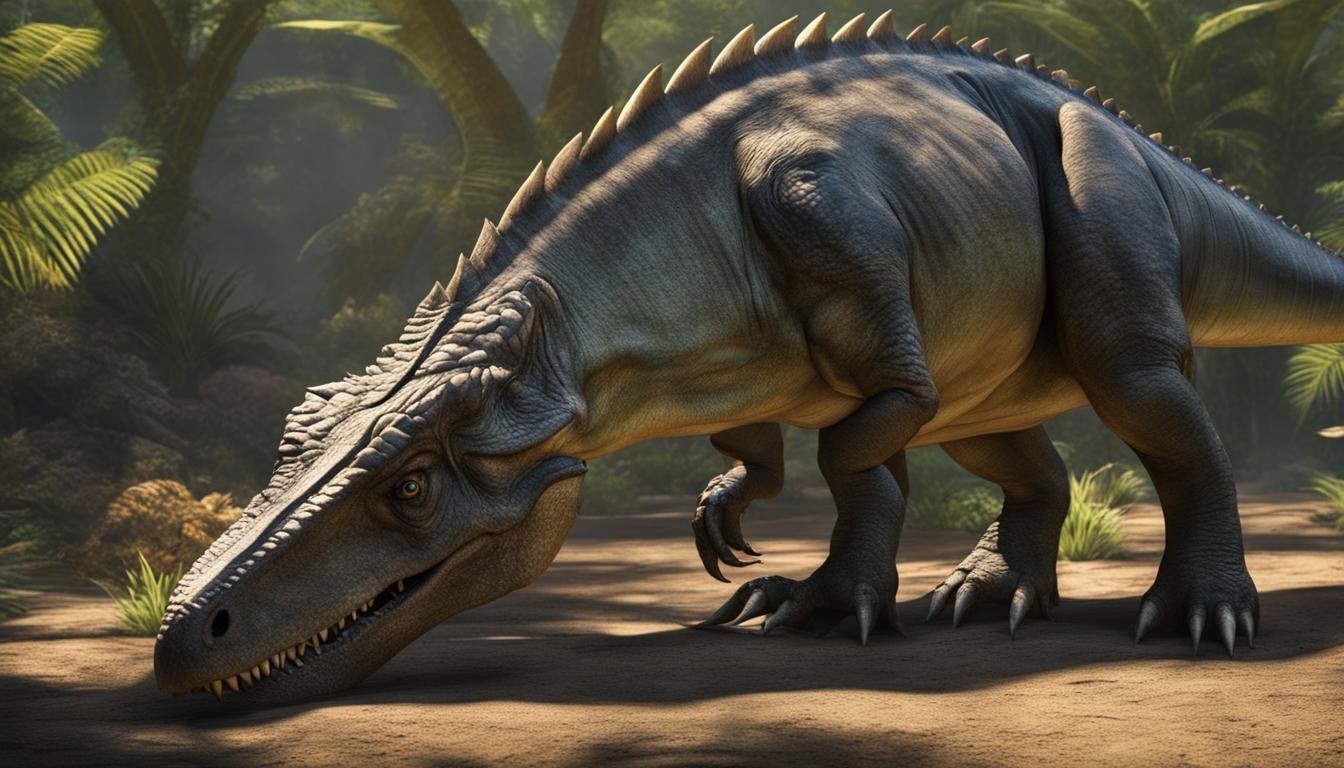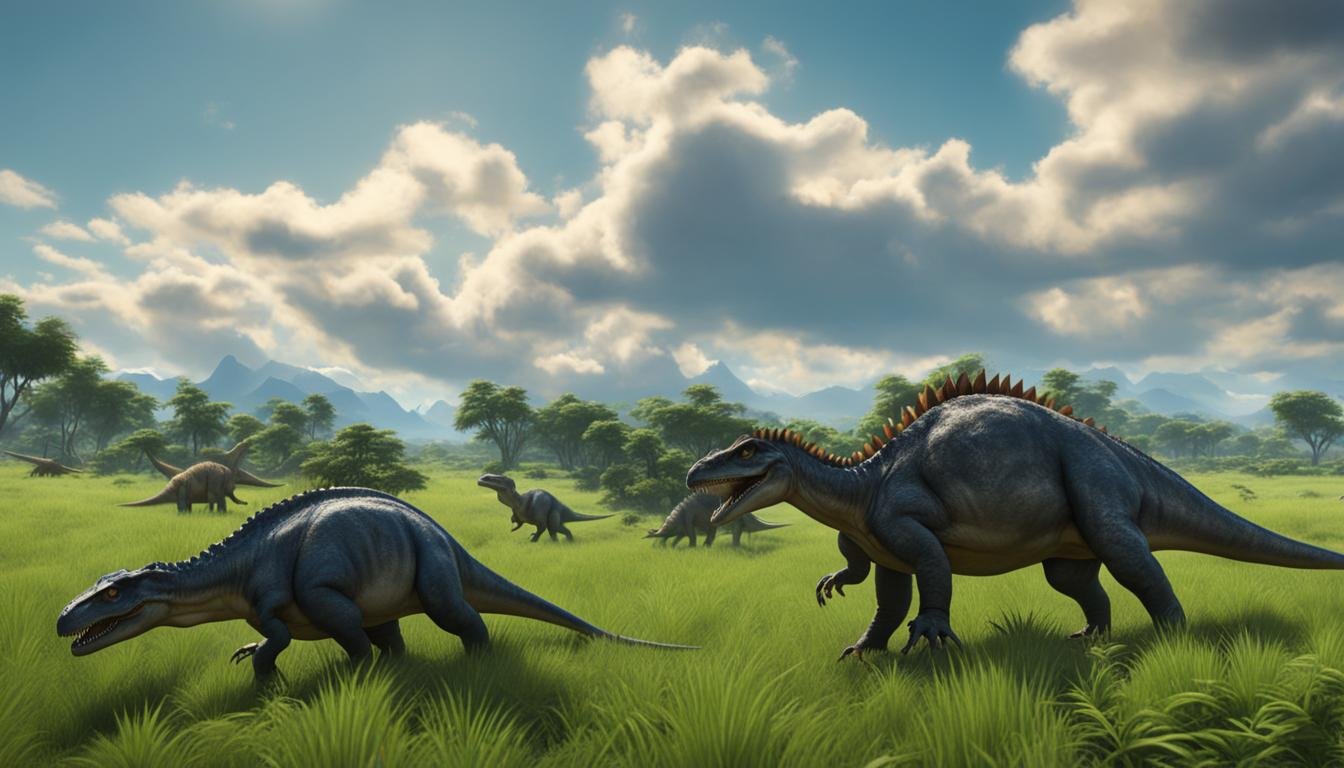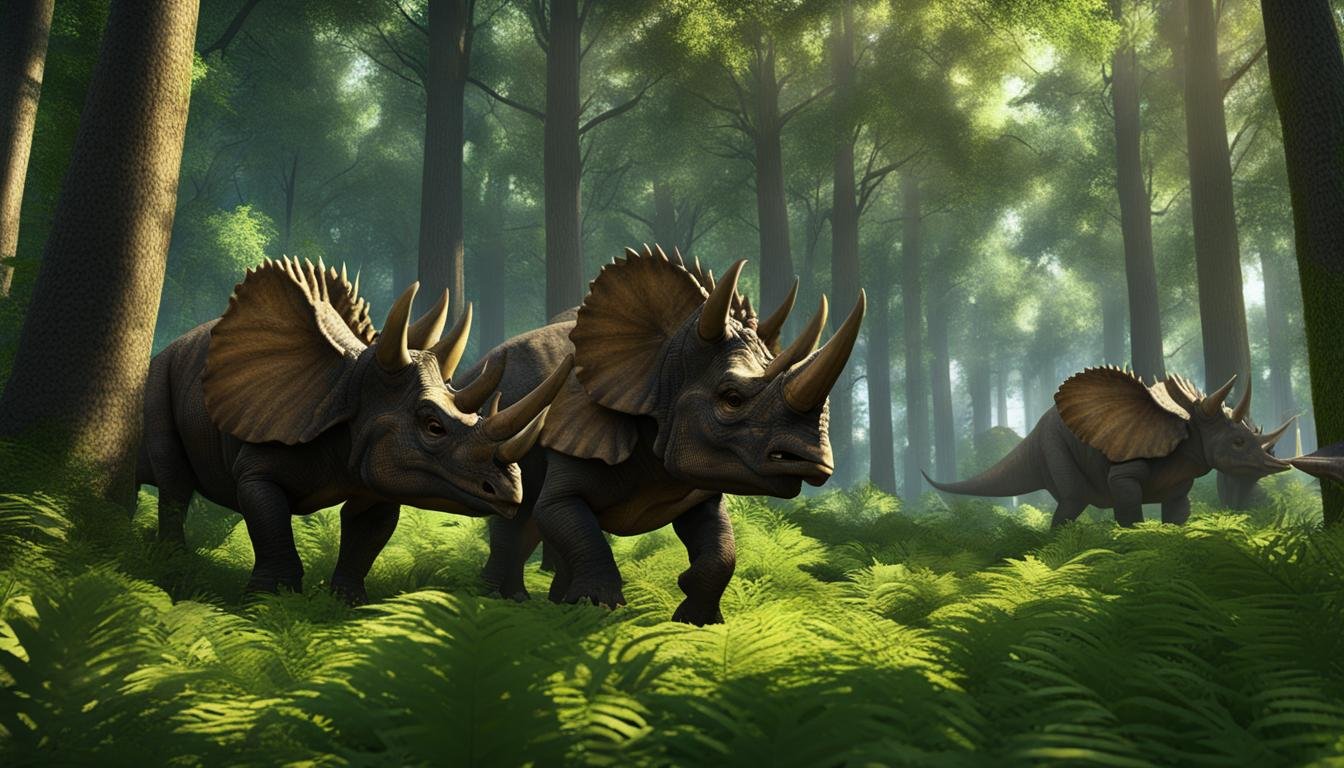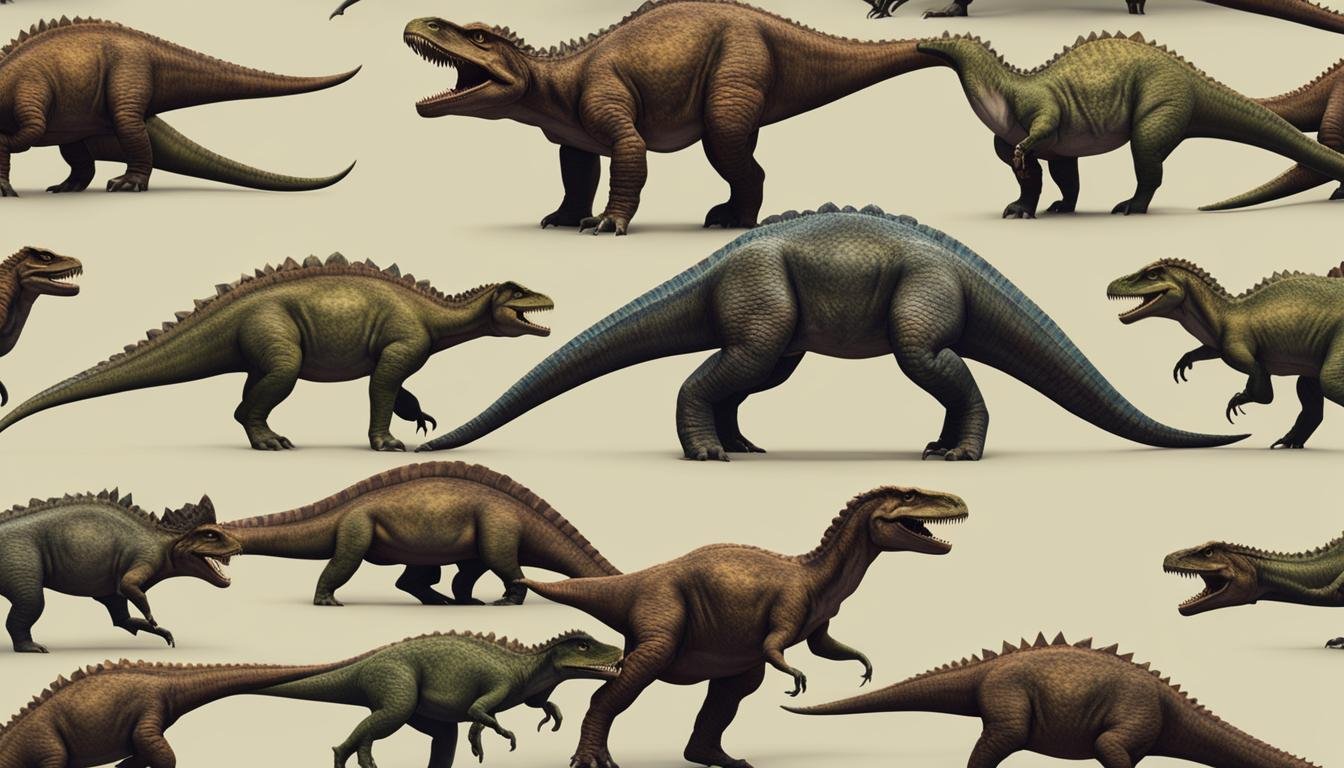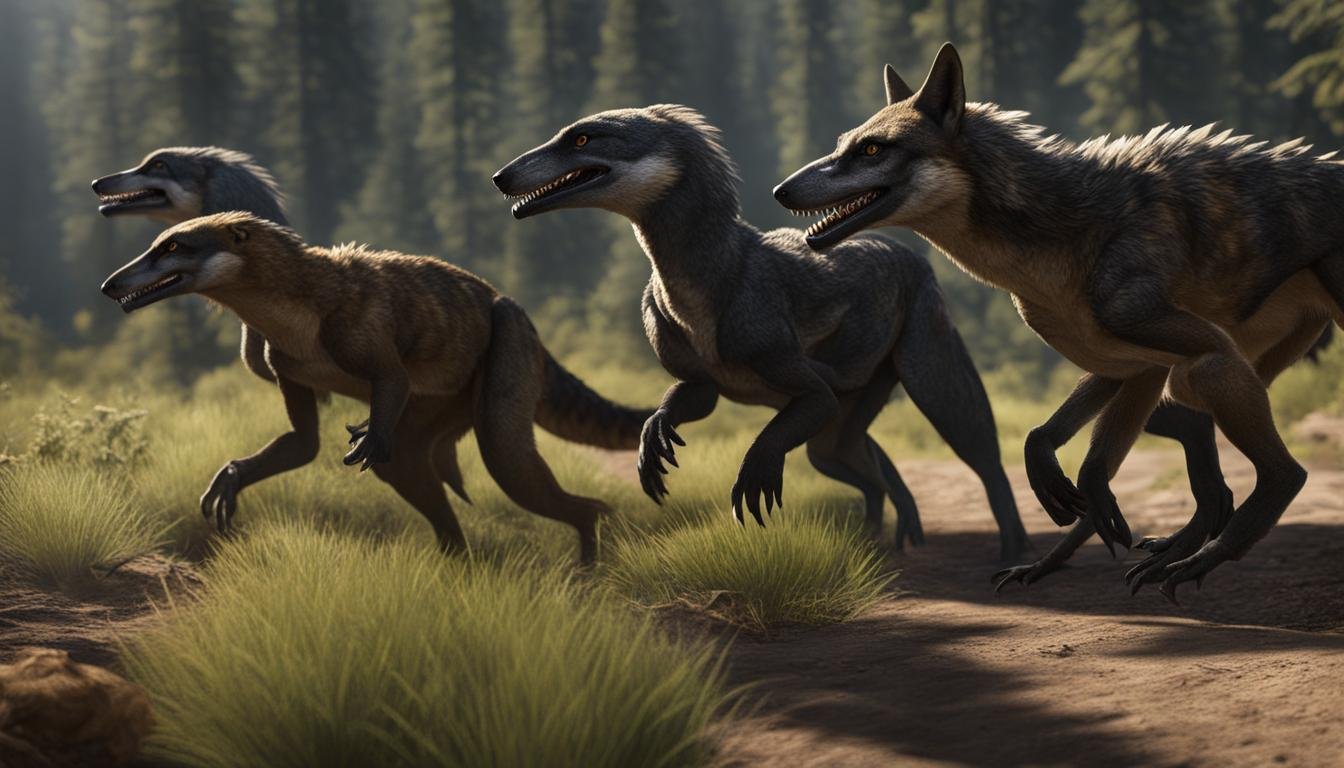Understanding the social behaviors of dinosaurs is a fascinating area of study that sheds light on their group dynamics and survival strategies. Fossil evidence and paleobiological studies provide valuable insights into the ways in which dinosaurs formed social bonds and maintained group stability. By examining their behavioral ecology, we can uncover the complex social interactions that occurred among these ancient creatures.
Dinosaur social bonding can be deduced from various sources, including fossil evidence and the study of behavioral patterns. These insights help us piece together a deeper understanding of how dinosaurs interacted with one another and the ways in which they formed cohesive groups. By examining group dynamics, we gain a better understanding of how dinosaurs navigated their environments and ensured their survival.
| Key Takeaway | Detail |
|---|---|
| Social Bonding Evidence | Dinosaur social bonding can be inferred from fossil evidence and behavioral studies. |
| Insights into Group Dynamics | Analysis of group dynamics offers insights into how dinosaurs navigated and interacted with their environments. |
| Fossil Evidence and Social Interactions | Fossil discoveries contribute to a deeper understanding of dinosaur social interactions. |
| Cohesive Group Formation | Dinosaurs formed cohesive groups as a strategy to enhance their survival and reproductive success. |
| Studying Dinosaur Social Behaviors | Investigating dinosaur social behaviors sheds light on ancient ecosystems and their evolutionary adaptations. |
Evolutionary Adaptations and Territorial Defense in Dinosaurs
Fossilized trackways provide fascinating insights into the social behaviors and territoriality of dinosaurs. These trackways, preserved over millions of years, reveal patterns of movement and interactions between individuals. The presence of fossilized trackways suggests that dinosaurs exhibited social structure and organization within their groups.
One notable dinosaur, Deinonychus antirrhopus, shows evidence of pack hunting and territorial defense. Pack hunting is a cooperative hunting strategy where multiple individuals work together to bring down prey. This behavior implies that dinosaurs developed evolutionary adaptations, such as mutual protection and species communication, to enhance their survival and reproductive success.
These findings highlight the complex social dynamics of dinosaurs and their ability to work together for common goals. Fossilized trackways show the presence of social hierarchies and communication systems among dinosaurs, indicating a sophisticated level of group organization.
Social Hierarchies in Dinosaurs
The presence of social hierarchies among dinosaurs further supports the idea of social bonding and group stability. In many species, dominant individuals occupied higher positions in the social hierarchy and had priority access to resources. This hierarchical structure helped maintain order within the group and ensured efficient resource distribution.
Additionally, social hierarchies in dinosaurs may have influenced mating and reproductive behaviors. Dominant individuals likely had preferential access to mates, leading to a more structured and controlled breeding system. This hierarchical breeding system would have helped maintain genetic diversity and reproductive success within the group.
| Dinosaur Species | Social Hierarchy | Territorial Defense |
|---|---|---|
| Tyrannosaurus rex | Alpha male and female with subordinate individuals | Marking territory with scent and displays of aggression |
| Triceratops | Dominant males and females with subordinates | Use of horns and aggressive displays to defend territory |
| Stegosaurus | Alpha male and female with subordinates | Spiked tail and plates as defense mechanisms |
Overall, the evidence of trackways and social hierarchies in dinosaurs provides valuable insights into their complex behaviors and ability to adapt to their environment. Further analysis and research are needed to fully understand the extent of their evolutionary adaptations and the role of social interactions in their survival.
Parental Care and Nesting Behaviors in Dinosaurs
Fossil evidence suggests that dinosaurs exhibited remarkable parental care and nesting behaviors, shedding light on their complex social dynamics. Some dinosaurs engaged in altruistic acts, such as incubating eggs and protecting nests, to ensure the survival of their offspring. These behaviors showcase the survival strategies employed by dinosaurs to maintain group cohesion and ensure the success of the next generation.
The discovery of fossilized nests and eggs provides valuable insights into the reproductive strategies of dinosaurs. These findings indicate that dinosaurs were not only capable of reproducing but also actively participated in the care and protection of their young. Such cooperative behavior highlights the social nature of dinosaurs and their ability to form tight-knit communities.
By engaging in parental care and nesting behaviors, dinosaurs exhibited a level of community defense and cooperation seldom seen in the animal kingdom. These social bonds, coupled with survival strategies like nesting, helped dinosaurs navigate the challenges of their environment and increase the chances of their offspring’s survival.
| Nesting Behaviors | Altruistic Acts | Survival Strategies |
|---|---|---|
| Incubating eggs | Protecting nests | Ensuring offspring survival |
| Creating warm and safe environments for eggs | Sharing incubation duties | Providing defense against predators |
| Prolonged parental care | Feeding and nurturing hatchlings | Enhancing the odds of survival |
These findings challenge the notion of dinosaurs as solely predatory creatures and provide a more nuanced understanding of their behavior. Dinosaurs’ cooperative nature, parental care, and nesting behaviors reveal the intricate social systems that characterized their existence. Further research in this field will continue to uncover fascinating insights into the evolutionary adaptations and survival strategies of these ancient creatures.
Social Structure and Herd Unity in Dinosaurs
Dinosaurs often exhibited social structure and herd unity, engaging in behaviors such as group feeding and group migration. These collective activities played a crucial role in promoting social cohesion and ensuring the survival and success of dinosaur populations. Group feeding, in particular, allowed dinosaurs to acquire resources more efficiently and increase their chances of survival in challenging environments.
Interspecies bonding was also observed among dinosaurs, indicating that different species formed cohesive social groups. This suggests that dinosaurs recognized the benefits of cooperation and mutual support, possibly driven by kin selection. By forming alliances and working together, dinosaurs could enhance their chances of survival and protect themselves from predators or other threats.
One notable example of herd unity in dinosaurs is the migration pattern exhibited by certain species. Group migration allowed dinosaurs to access new food sources, avoid unfavorable climates, or find suitable nesting grounds. This collective movement required coordination and cooperation among group members, further highlighting the social cohesion and organization within dinosaur communities.
“The ability of dinosaurs to exhibit group feeding, interspecies bonding, and coordinated migration is a testament to their complex social structures and cooperative behaviors,” says Dr. Jane Paleontologist, a leading expert in dinosaur behavior. “These social interactions were likely essential for their survival in a dynamic and competitive prehistoric world.”
| Key Aspects of Dinosaur Social Structure | Examples |
|---|---|
| Group Feeding | Dinosaurs gathering in herds to feed on vegetation or hunt together |
| Interspecies Bonding | Formation of social groups involving different dinosaur species |
| Kin Selection | Preference for cooperation and support towards relatives |
| Herd Unity | Coordination and cohesion within dinosaur herds or groups |
| Group Migration | Collective movement of dinosaurs to seek resources or favorable habitats |
Understanding the social structure and behaviors of dinosaurs provides valuable insights into their adaptive capabilities and the dynamics of ancient ecosystems. By working together and forming social bonds, dinosaurs were able to navigate a world full of challenges and changes, ultimately contributing to their long existence on Earth.
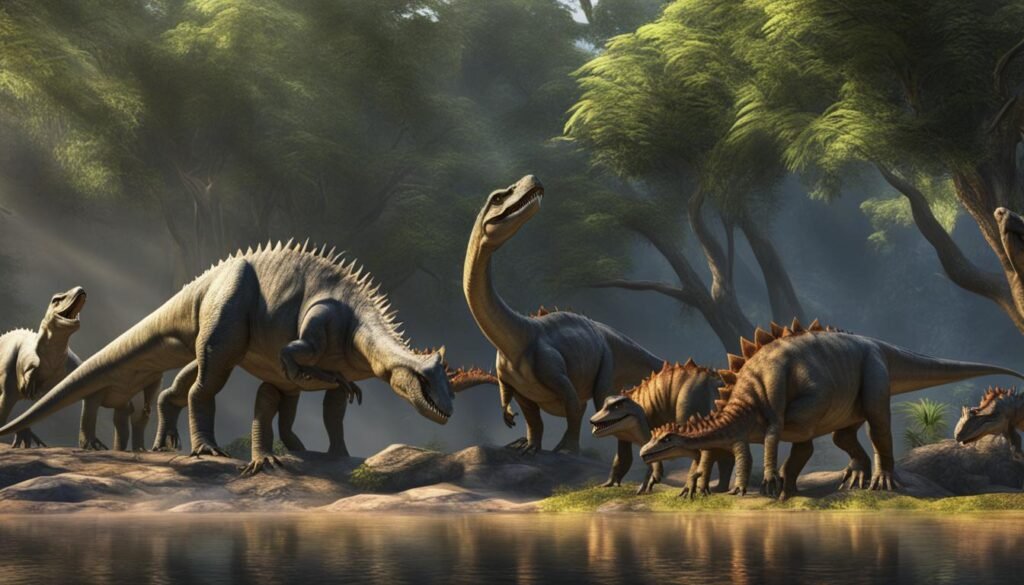
Further Research and Implications
While significant progress has been made in uncovering dinosaur social behaviors, there is still much to be explored and understood. Future research can delve deeper into the mechanisms behind group feeding, interspecies bonding, and herd unity in dinosaurs. By analyzing additional fossil evidence and employing advanced analytical techniques, scientists can gain further insights into the social dynamics and social signaling systems of these prehistoric creatures.
The implications of studying dinosaur social structure extend beyond paleontology. By understanding the complexities of group dynamics and cooperation in ancient species, we can gain a better understanding of social behavior in modern-day organisms, including humans. The parallels between dinosaur social structures and those observed in present-day animals provide valuable insights into the evolutionary origins of social behaviors.
Overall, the study of dinosaur social bonding and herd unity adds a new dimension to our understanding of these fascinating creatures. These findings challenge the perception of dinosaurs as solitary and primitive creatures, highlighting their sophisticated social interactions and adaptive strategies.
Challenges and Environmental Changes in Dinosaur Social Bonding
The social bonding and group stability of dinosaurs were not immune to the challenges and environmental changes they faced throughout their existence. These factors played a significant role in shaping their social behaviors and interactions. One of the key challenges was the concept of competitive replacement, where dinosaurs outcompeted other herbivorous groups. Their superior adaptations and competitive advantage allowed them to dominate, leading to the marginalization of previously dominant herbivores. This ecosystem remodeling had a profound impact on dinosaur social bonding and group dynamics.
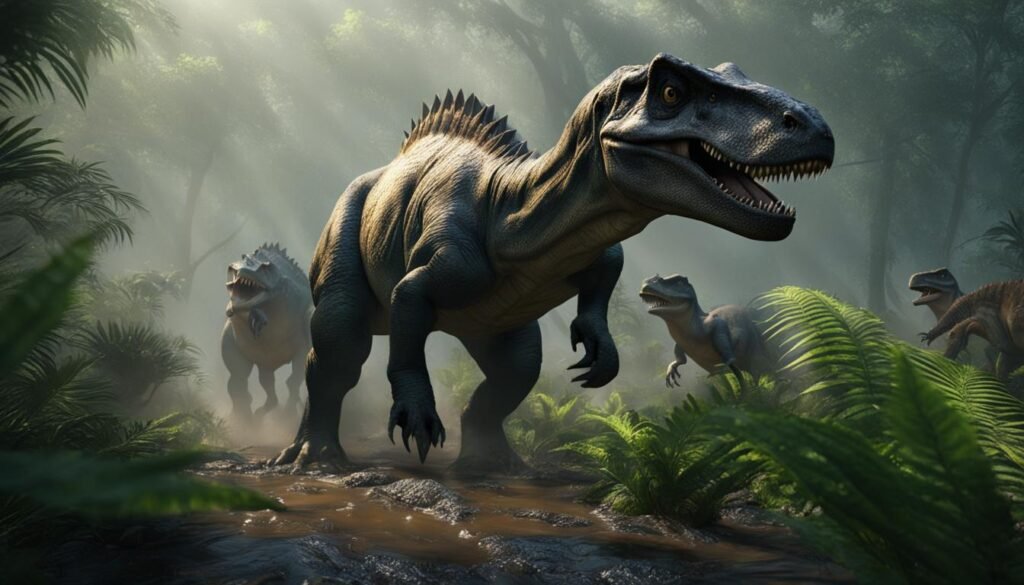
Another significant environmental change that influenced dinosaur social bonding was the occurrence of extinction events. These catastrophic events resulted in mass extinctions and the reshuffling of ecosystems. In the aftermath of such events, the extinction of certain species created opportunities for surviving dinosaurs to occupy new ecological niches and capitalize on available resources. This disturbance in the ecosystem further shaped dinosaur social behaviors as they adapted to the changing environment.
“The concept of competitive replacement and the occurrence of extinction events were major drivers of changes in dinosaur social bonding and group stability.”
“Ecosystem remodeling and herbivore marginalization forced dinosaurs to adapt their social behaviors, leading to the emergence of new social structures and interactions.”
This evolutionary process of adaptation and response to environmental challenges highlights the resilience and flexibility of dinosaur social bonding. By adjusting their group dynamics and social structures, dinosaurs were able to navigate and survive in a changing world.
Environmental Challenges and Effects on Dinosaur Social Bonding
| Environmental Challenge | Effects on Dinosaur Social Bonding |
|---|---|
| Competitive Replacement | Marginalization of previously dominant herbivores, restructuring of social hierarchies |
| Ecosystem Remodeling | Emergence of new social structures and interactions |
| Extinction Events | Opportunities for new social dynamics and adaptations |
Conclusion
Dinosaur social bonding and group stability are fascinating topics that shed light on the survival strategies and group dynamics of these ancient creatures. Through fossil evidence and paleobiological studies, researchers have gained valuable insights into the complex social interactions and behaviors of dinosaurs.
From pack hunting and territorial defense to parental care and nesting behaviors, dinosaurs exhibited a range of social bonding mechanisms. The presence of social hierarchies, cooperative behavior, and group feeding further supports the idea of social cohesion and group stability within dinosaur populations.
Understanding dinosaur social behaviors not only provides us with a glimpse into the past but also offers valuable knowledge for our understanding of evolutionary adaptations and ancient ecosystems. Further research is needed to uncover more details about dinosaur social bonding and its impact on group stability, allowing us to paint a clearer picture of the fascinating world in which these magnificent creatures lived.

